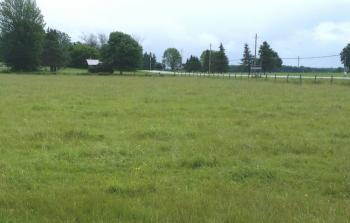Benefits of Late Mowing for Grassland Birds

South Nation Conservation (SNC) with support from Ontario Power Generation (OPG) wants to help farmers and rural landowners protect grassland bird species.
Farmers and other rural landowners have a unique opportunity to support grassland birds, and the management of grassland habitats, alongside their production practices. Species, such as the Bobolink and the Eastern Meadowlark, are at risk due to the loss of their native grassland habitat and the conflicting timing of hay operations with the start of when their young are able to fly.
A variety of Best Management Practices can be implemented for grassland birds. One of those practices includes delaying hay cutting until after July 15th when young birds are able to fly away from their nest. Understandably, rural landowners may not want to delay the harvest as it decreases the quality of the hay over time.
If delaying the harvest is not an option, here are a few other alternatives that could minimize bird mortality.
One alternative involves surveying hay fields for nesting birds. Bobolinks are more identifiable since the males often hover above the nesting areas. If farmers have several hay fields to harvest, they are encouraged to cut the fields where Bobolinks are nesting last, to give their young an increased chance of survival.
The practice of cutting 6-10 swaths around the perimeter of large fields and leaving the interior for a later harvest can be helpful for grassland birds as they tend to avoid the area within 100 meters of the field edge for nesting.
For farms with livestock, the practice of rotational grazing can be beneficial to nesting birds because part of the pasture area will have taller grasses that are ideal for nesting. This practice also increases livestock productivity.
Other options include converting marginal agricultural land into native prairie by planting a mixture of native grasses, and mowing in the late summer to remove any woody vegetation.
The Species at Risk Farm Incentive Program, administered by the Ontario Soil and Crop Improvement Association, provides cost-share funding to agricultural landowners interested in completing habitat creation/protection projects, and to those interested in carrying out Best Management Practices for species at risk, such as the ones mentioned above. For more information on this program: www.ontariosoilcrop.org/en/programs/species_at_risk.htm
Do you have at least 5 acres of vacant land covered by grasses or shrubs in the SNC jurisdiction? Contact Michelle Cavanagh today at 1-877-984-2948 ext. 310 or mcavanagh@nation.on.ca to find out how we, with support from OPG can help you enhance grasslands and meadows to improve habitat for birds, pollinators, and more!

